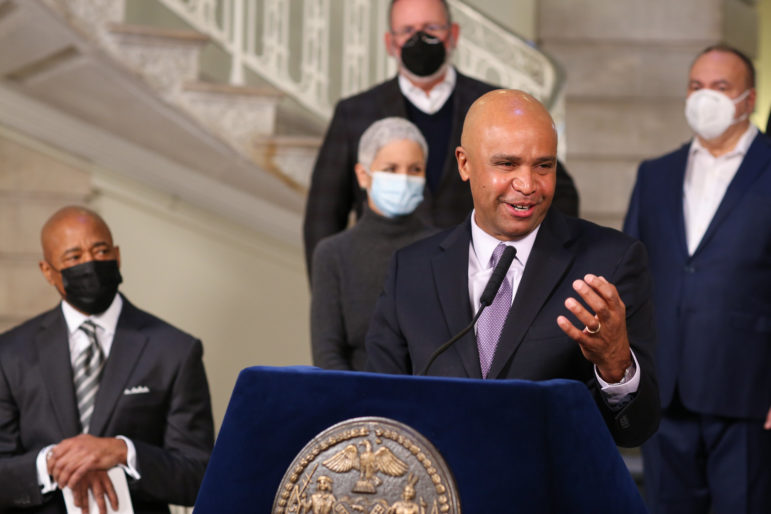Outraged that the city still isn’t complying with Brad H., a year-old legal settlement that requires the city to help mentally ill inmates transition from prison, members of Rights for Imprisoned People with Psychiatric Disabilities stormed into the offices of the Department of Health and Mental Hygiene Wednesday.
“These people aren’t off the hook,” said Lisa Ortega, an organizer with the group. “We won’t give up until the inmates get their services.”
Yet even if they were receiving proper care, it would be almost impossible to tell: Hundreds of mentally ill inmates seem to be missing from the computer system in place created to help the court monitor compliance.
Brad H. v. City of New York, named for a depressed man who was incarcerated repeatedly over 30 years, was settled on December 8, 2003. The settlement set in place a tracking and counseling system designed to ensure mentally ill inmates have access to counseling, medication, Medicaid and housing once released.
As part of the settlement, the city hired two compliance monitors who meet with staff and inmates at Rikers Island and compile quarterly reports using data from the computer system that tracks these inmates–much like a database of electronic patient files.
But so far, the data has painted an incomplete and perhaps inaccurate picture, said John Gresham, a lawyer at New York Lawyers for the Public Interest, who has worked on the case for years. “The reports are coming out with just a minuscule number of inmates–it’s gross underreporting. This system is not meant to just be a sampling,” he said.
For example, the most recent report to the court by monitors Henry Dlugacz, an attorney, and Dr. Eric Roskes identified 4,447 “seriously and persistently mentally ill” inmates eligible for exit planning during the last quarter of 2003. However, medical records reveal that only 115 inmates were offered medications upon release over this period; slightly fewer received them. While not all mentally ill inmates need or take medications, lawyers involved in the case suspect that these starkly low statistics illustrate a major problem with how the new tracking system is being used.
“I want to know where the inmates are, who they are meeting with, when they are released, but I cannot get the information from the monitors if they do not have complete data to report,” said Councilmember Margarita Lopez, chair of the Committee on Mental Health, Retardation, Alcoholism, Drug Abuse and Disability Services, who is holding hearings to explore discharge planning.
Dlugacz and Roskes are court-ordered not to speak with the media, though their next quarterly report, due out next month, is expected to detail more specific inmate statistics and address the issue of under-reporting.
In a written statement, the city’s legal department acknowledged the problem and vowed to improve it. “The special database designed for this program is currently under-utilized, yielding results that do not accurately reflect our efforts,” wrote Jeffrey Dantowitz, assistant corporation counsel.
Heather Barr, the Urban Justice Center lawyer who first filed Brad. H in 1999, finds that galling. “They still say they are having communications problems and reporting problems. I don’t buy that for a minute.” Barr said. “This isn’t just about the data, this is about complying with a court order, and these services to inmates are simply not optional.”








